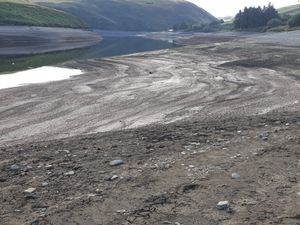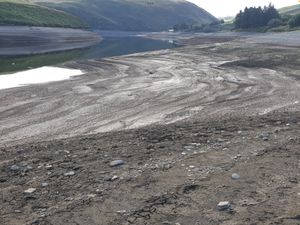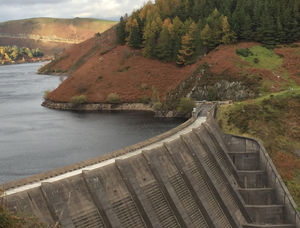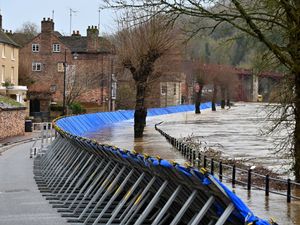'More than just a weekend's rain' is needed as photos reveal half-empty reservoir
A reservoir that helps supply water to Shropshire is currently half empty - or half full, depending on your point of view.

According to regional water company Severn Trent, having the giant Clywedog Reservoir near Llanidloes 55.6 per cent full at the beginning of autumn is not too bad a place to be in.
Sited at the head of the River Severn, the giant reservoir has a capacity of 49,936 million litres and is used to make sure that England's longest river doesn't run too low of the wet stuff.

Severn Trent says it currently has 27,764 million litres there after one of the hottest, driest summers on record.
Both the water company and the Environment Agency have appealed to customers to continue to use water wisely, even as the Met Office forecasts a bit of a drenching in the days ahead.
Clare Dinnis, the Environment Agency area director for the West Midlands, tweeted that the rain in the forecast "will be welcomed by gardeners, wildlife and more".

She posted pictures of the giant reservoir showing the areas which would have been underwater clearly exposed. She said for the last 90 days water from the reservoir has been one of the sources supplementing River Severn flows.
Ms Dinnis said her pictures showed "why one weekend's rain is not going to make a real difference", adding: "Please use water wisely."
She said rainfall has been "below average for the last year".

A Severn Trent spokesperson said: “As a result of preparation work throughout the year to remain resilient and protect water supplies, the Severn Trent network is in a good position.
"However, with no significant rain in the forecast and having experienced the driest July in a century, the ongoing conditions could continue to increase demand.
“We are continuing to ask people to be mindful of their water use, as small behavioural changes can add up to a big difference and would like to thank all our customers for their continued support as the warm and dry weather continues into the summer.”
Severn Trent is pumping an extra hundred million litres of water into the network every day, while the number of tankers in the fleet has been doubled so water can be moved into supply more quickly than ever before.
Expert engineers are also working 24/7 and are fixing around 3,000 leaks a month, which can be caused by pipes bursting as a result of the ground drying up and moving due to the hot weather.

Water companies are criticised for leaks, and Severn Trent is no different with its network of 50,000Km of pipes.
It fixes 3,000 leaks a month on public land, has a £650 million investment plan up to 2025, and can help advise homeowners on their responsibilities from the stop tap to their properties.
A Severn Trent spokesperson said: “Every day, Severn Trent delivers on average 1.9 billion litres of water to homes across the region – which can rise to 2.3 billion litres in hot weather. This is all delivered across a complex network of 50,000 kilometres of water pipes.
“Our team of 200 engineers work 24/7 to find and fix burst pipes all across our region. In the last two years we have halved the time taken to fix a leak and have reduced leakage by 3.4 per cent, putting us on track to reduce leakage by 15 per cent by 2025.
“We’re also utilising new technologies including satellite technology that can detect leaks from space, drones that can find leaks through subtle temperature changes, and over 30,000 acoustic listening devices that can ‘hear’ leaks.
“Just under a third of all leaks are on customer premises, so working together with our customers is incredibly important.
"We are investing over £300m in metering and 59 per cent of our customers – or around 2.2 million people - currently have a water meter installed, which can help them understand their usage at home, reduce their bills and identify any leaks on their property.
“Water loss through leakage presents a challenge and can be caused by damage from extreme weather, wear and tear on the network, and the weight of ever-increasing traffic on roads linked to population growth.”





